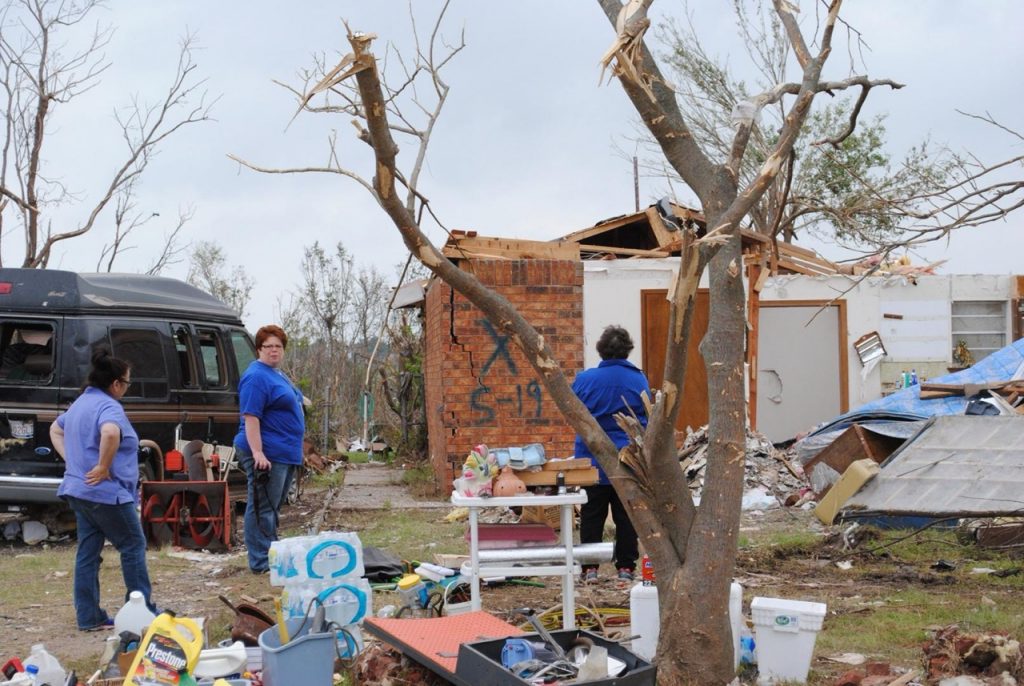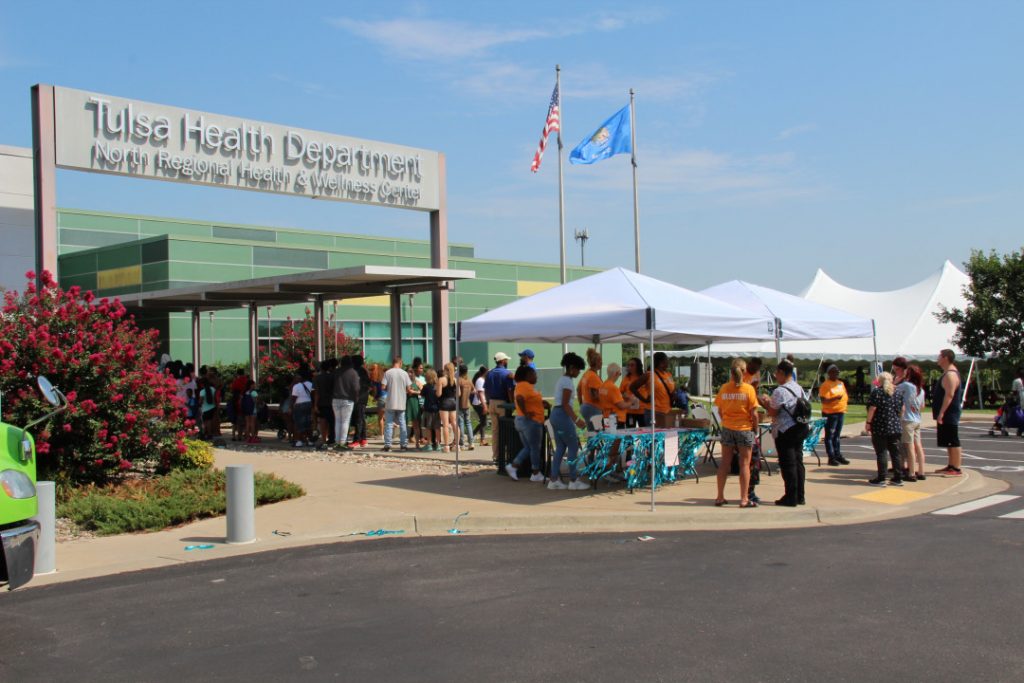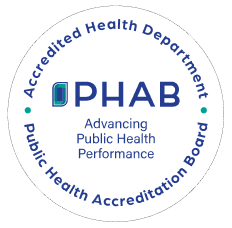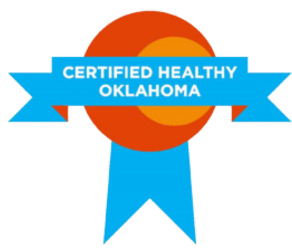Being prepared in the event of a terrorist attack, natural disaster or other large-scale emergency or public health threat is a necessary part of today’s world.




Being prepared in the event of a natural or man-made disaster, pandemic or other public health threat is a necessary part of today’s world.
On a national level, agencies such as the U.S. Department of Homeland Security, the Federal Emergency Management Agency and the Centers for Disease Control and Prevention vigilantly work to protect and secure the Unite States. Here in Tulsa County, local organizations including the Tulsa Health Department (THD), Tulsa-area hospitals, EMSA, law enforcement agencies, fire departments, Tulsa Area Chapter of the American Red Cross and others work with the Tulsa Area Emergency Management Agency to ensure community disaster preparedness and response plans are in place.
What is THD Doing?
As the agency charged with addressing public health concerns within Tulsa County, THD must be prepared to take immediate steps to ensure public safety from diseases and other health threats. Preparedness starts with having a plan. THD has developed comprehensive plans aimed at minimizing the impact of the disaster. The plans include identifying and securing resources and providing countermeasures essential for protecting the public. The plans are trained, exercised and evaluated to ensure they are operational. The training and exercise program provides basic, intermediate and advanced level training opportunities to THD personnel and Oklahoma Medical Reserve Corps (OKMRC) volunteers as well as discussion-based and operations-based exercise opportunities to test and improve the plans.
THD Emergency Preparedness and Response efforts fall within the following categories:
CMS Emergency Preparedness Rule
Centers for Medicare & Medicaid Services (CMS) suppliers and providers looking for information on coordinating with your local healthcare coalition should visit the Oklahoma Regional Medical Response System (RMRS) website at www.okrmrs.com for contact information specific to your service area.
I. Access and Functional Needs
Access and Functional needs describes populations who may require specialized help during emergencies. These populations can include seniors aged 65 and older, populations with a disability (physical or mental), non-English speakers, and people who live in close quarters (college dorms, nursing homes or prisons). The Tulsa Health Department’s (THD) plans include providing assistance to these populations during a public health response. Inclusive of these plans are maps identifying known locations of these specialized populations based on the US Census.
II. Mass Fatality
The Mass Fatality Plan identifies the support role the Tulsa Health Department (THD) would play in a mass fatality incident, which is described as more deaths than the current system is able to handle. The lead organization for a mass fatality incident is the state medical examiner and THD would offer whatever resources it had available to assist in the response.
III. Shelter Support
The Shelter Operations Plan is used during disasters (tornados, fires, etc.) which leave families or whole towns temporarily displaced. The plan outlines various roles in which the Tulsa Health Department (THD) can support the American Red Cross who would be the lead agency providing shelter and immediate needs for displaced persons.
IV. Oklahoma Medical Reserve Corps (OKMRC)
You Can Help In Times of Disaster
During a large-scale emergency or disaster, THD will coordinate with other agencies to maximize community recovery efforts. Public health relies on a variety of professional experience to establish a prepared local community, enhance services and enrich the quality of life in Tulsa County. Equipped and trained volunteers are critical in establishing a prepared local response. THD welcomes and appreciates volunteer support at all times. In order to ensure a clear plan of action for the utilization and mobilization of emergency volunteers, THD manages the Tulsa County OKMRC Unit of the Oklahoma Medical Reserve Corps (MRC) For more information, visit okmrc.org and “Join OKMRC.”
V. Push Partner
The Centers for Disease Control and Prevention (CDC) has identified the need for all communities to be prepared to provide medical countermeasures (oral medications and/or vaccine) to 100% of their population as quickly as possible. To address this Tulsa Health Department (THD) has developed a response to a large-scale public health emergency where the entire population of the county needs medical countermeasures (MCM) within a short time frame. To quickly provide MCM, THD uses a two-tiered response.
The first tier focuses on getting MCM to emergency response organizations (public health and public safety, critical infrastructure, other disaster service workers, etc.). Providing MCM to emergency response organizations first will maintain critical infrastructure so MCM can then be successfully provided to the general public.
The second tier focuses on getting MCM to the general public as quickly as possible. It uses “pull” and “push” strategies. The “pull” MCM strategy involves Open Point of Dispensing (POD) sites to “pull” people to where they can receive MCM for themselves and/or others as appropriate. The Open PODs will be set up throughout Tulsa County with the goal of providing MCM to the public.
The “push” MCM strategy involves Closed Point of Dispensing (POD) sites. This strategy includes “pushing” MCM to partner organizations (Push Partners) to provide to their employees, employee families and, if applicable, their clients (homebound, patients, inmates, business partners, etc.). The THD Push Partner Program develops partnerships with organizations, with (or access to) medical staff, which can safely and rapidly provide MCM to their employees, employee families and, if applicable, clients.
Push Partner Closed PODs reduce the burden on Open PODs and help ensure the operational integrity of the business and medical communities. By participating in the Push Partner Program the organization will provide a valuable and appreciated service to their employees, employee families and, if applicable, their clients. In addition, it will help employees avoid long wait times at Open PODs if they can receive MCM where they work.
Learn how your organization can become a push partner by contacting the Emergency Preparedness and Response Program at 918-582-9355.
Information and Helpful Resources
Accessibility to current information on potential threats to public health and safety is an important part of emergency prevention and preparedness. The following links provide information from the Centers for Disease Control and Prevention on potential bioterrorism agents, chemical agents and radiation emergencies. THD encourages you to report information concerning suspicious or criminal activity to the proper local, state or federal authorities.
Epidemiology
The Tulsa Health Department investigates and provides information on the many diseases and conditions affecting our population. Some of the diseases are frequently seen in the community. Others may occur sporadically or have never been seen but have the potential to occur.
What You Can Do To Protect Yourself and Others
Taking steps to be prepared for emergencies and knowing what to do if the strike is essential. The guides below can help with practical steps and information.
For more information, visit www.Ready.gov.
We have 10 locations across Tulsa County that offer a variety of services to help you and your family stay healthy.







